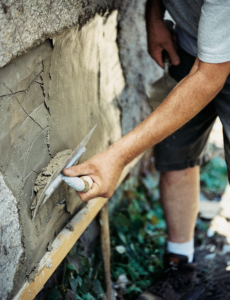Leadership Development is an approach to training that gives managers the skills they need to lead their teams effectively. Whether for new leaders, mid-level people managers, or senior executives, these programs include coaching, formal mentorship, accessible online learning, and smart goal setting.

For example, teaching future leaders how to create measurable and attainable goals helps them build a team that can meet quarterly and annual objectives. Visit https://www.rippleeffectculture.com/ to learn more.
Many managers struggle to understand what strategy execution really means. Some describe it as the implementation of a strategy in order to reach organizational goals. Others see it as the daily structures, systems, and operational goals that set a company up for success. Both of these approaches have merit, but both suffer from a sort of Goldilocks problem: the process view lacks sufficient detail to guide managers through the work that needs to be done (too cold); while the systems view contains too much information and complexity that can overwhelm a manager’s ability to take action (too hot).
The key to effective strategy execution lies in the people who carry out the daily tasks associated with an organization’s strategic initiatives. This means that any leadership development program should focus on building up team members who have the skills, information, decision-making power, and context to implement a strategy effectively. It also means establishing clear, numeric performance metrics for strategy-related activities so that progress toward the overall goal can be assessed on a regular basis.
Once a strategic plan is in place, leaders must be ready to adapt as the business environment evolves. This may mean changing timelines, reworking priorities, and reallocating resources to support critical objectives. It can also include identifying and communicating unforeseen challenges and adjusting plans to account for them.
To successfully execute a strategy, leaders must communicate the rationale behind it and how it will impact the overall goals of the organization. They must also establish a system for reviewing performance and addressing any issues that arise. This should be a dynamic process that doesn’t wait until quarterly or annual reviews to identify and address potential problems; rather, it should be an ongoing, flexible, and responsive management practice.
Finally, the key to successful strategy execution is ensuring that financial and human resources are allocated in line with strategic objectives. This involves regularly assessing existing projects, determining their contribution to the strategic goal, and allocating resources accordingly. It also involves setting appropriate budgets that enable the strategic objectives to be achieved.
Fostering Broader Connections
Leadership development is about developing future leaders capable of working with all team members to achieve company goals. This means the program must cover more than simply transforming quarterly and yearly goals into actionable tasks. It must also foster broader connections across teams so that when the unexpected occurs, these future leaders are prepared to mobilize their people.
To ensure that a leadership development program covers both of these elements, it’s important to include the following leadership skills in the curriculum:
Emotional intelligence: Leadership requires an ability to recognize and understand one’s own emotions as well as those of others. It also includes the ability to manage conflict and build trust with employees. Strategic thinking: This is the ability to think long-term and anticipate trends. It also includes the ability to formulate strategies that help lead the organization in a positive direction. Coaching and mentoring: This is the ability to encourage, support, and develop employees in a constructive manner.
Connected leadership: Connected leadership involves focusing on building trust and respect with employees. It also involves empowering employees to share their ideas and opinions. This type of leadership style has been shown to have multiple benefits, including higher employee morale and a lower turnover rate.
Developing these leadership skills can be done through various methods, including formal training programs and on-the-job experience. However, it’s important to ensure that the programs align with the business strategy and create organizational impact. Leadership programs that fail to meet these needs are unlikely to provide real value for the participants or their organizations.
For example, when Cinepolis launched its leadership development program, it had clear performance outcomes in mind, like increasing revenue. As a result, the program content and design were highly targeted to specific leadership levels and data was collected throughout the process to ensure that it was having the desired effect. The program was successful in helping the theater chain develop innovative leaders from the C-suite all the way to the frontline, which had a direct impact on company growth. Leadership development is a massive industry, but not all leadership development programs actually pay off for the participants.
Building a Stronger Culture
Leadership development involves helping people develop the characteristics and skills needed for a strong culture. It also teaches them how to foster growth and innovation in the organization, and how to cultivate the right mindset for this. This enables leaders to prioritize team members and help create a culture that encourages engagement and commitment.
While all employees have some impact on company culture, it is clear that leadership has by far the most significant effect on how a business is run. When leaders have a strong cultural framework and character, it translates into the values that they communicate to others and that are embraced by the entire organization. This is why it is critical for companies to provide effective leadership development programs and initiatives.
In addition to teaching individuals how to effectively lead people, these programs can also boost a company’s bottom line. This is because leadership development helps build a culture of trust and accountability, which in turn reduces turnover costs. When employees know that management is committed to their long-term career progression, they are more likely to stay with the company and be less interested in seeking out new opportunities elsewhere.
Increasing employee satisfaction and loyalty, creating a culture of performance, and fostering innovative ideas are all key benefits to investing in leadership development. As the world of work continues to evolve, it is important for organizations to keep up with changing trends and ensure they have the right talent in place to continue to thrive.
This is why it’s vital to have an ongoing leadership development program in place that identifies and nurtures potential leaders for seamless succession. This not only ensures that the company has a consistent supply of capable leaders for future roles, it also helps to promote a culture of continuous learning and growth that is crucial to maintaining an edge over the competition. Leadership development often includes mentoring and coaching, which can help hone the skills of new hires and improve the effectiveness of existing executives. In addition, some of these programs include multirater feedback, which can provide motivation and focus to individual participants by measuring their leadership behavior and abilities from the perspectives of their peers, supervisors and other stakeholders.
Developing Team Members
Leadership development is a process of enhancing the skills, qualities, and competencies of individuals to become effective leaders. It encompasses personal growth, skill refinement, and an understanding of organizational dynamics. It also includes teaching others to lead and inspire.
A key component of developing a team is providing opportunities for participants to practice their new leadership skills in a safe and supportive environment. A common way to do this is through group activities and discussions that foster peer learning and collaboration. This is also an excellent opportunity for participants to learn about their own leadership styles and areas of improvement.
It’s also important to teach participants how to set measurable and attainable goals during this training. Creating stretch goals can help develop strong leadership capabilities and encourage participants to take on more challenging work. However, it’s important that you do not make the goals too difficult to achieve, or participants will feel discouraged and may not be willing to participate in future training programs.
Another critical aspect of building a leadership team is fostering empathy amongst the members. This helps to build trust and a sense of belonging within the group, which in turn leads to more innovative ideas for problem-solving. You can do this by ensuring that all members are treated fairly and have their voices heard during the planning and execution of projects.
You can do this by encouraging your team members to share their thoughts and opinions about the projects they’re working on, even if they disagree with them. This will create a sense of camaraderie and allow everyone to find their niche in the project.
Lastly, it’s important to teach your team members about the different leadership styles and approaches that exist in the workplace. This allows them to choose the style that’s right for them and can help them to be a better leader in their current role as well as in future roles.
Ultimately, one of the best ways to nurture a leadership team is by modeling the behavior you want them to exhibit in their daily work. This can be done by setting clear expectations, establishing strong communication channels, and demonstrating the values of your organization.








